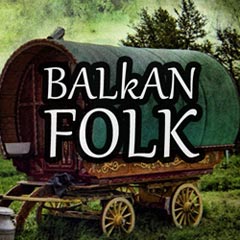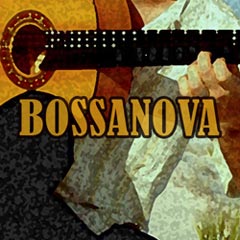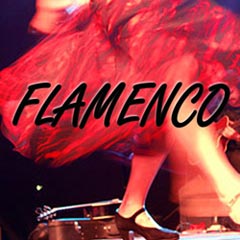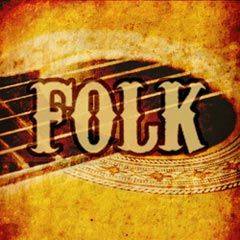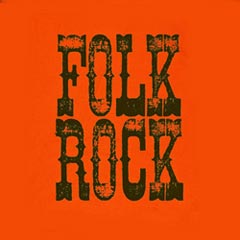Flamenco
ON AIR - PROGRAMMING
Flamenco is a style of music whose roots lie in the gypsy caravans of India and that were developed in the Arab and Spanish Andalusia. A sound suitable for solos, dramatic vocals, Spanish guitar, wild dancing, clapping and castanets galore. Flamenco music is an ancient and expressive art form that originated in Andalusia, the Southern region of Spain. The traditional Flamenco style involves the blending of guitar rhythms, singing styles, hand claps, and subtle foot stomps for captivating beats. Over the years, Flamenco has been heavily improvised by various musical gypsies with great ease and excitement to provide an inexplicable feeling when listened to. Experiencing this type of music usually draws similarities between joy and sorrow amongst its listeners as within every song lies a hidden emotion. Many claim listening to Flamenco to be therapeutic due to its ability to bring solace after bouts of depression or heartbreak while bringing spirit and conviction during a night full of delight. So take out your Flamenco records played off vinyl and carry yourself away in melodic wonders! The native artistic expression of Andaluc’a, Spain. Cante, baile and toque, jaleo, palmas y pitos. The guitar and the singing determine the rhythm of flamenco dancers.
The Rhythmic and Expressive Art of Flamenco Music
If you're a music enthusiast, then you've definitely come across Flamenco music, a style of music that originated in Andalusia, Spain. This musical genre is incredibly unique and captivating, drawing its roots from gypsy caravans of India and developed in the Arab and Spanish Andalusia. Flamenco is a music genre that involves powerful and dramatic vocals, Spanish guitar, castanets, wild dancing, clapping, and a whole lot of foot stomping. This tradition has been passed down through generations and has evolved into a widely celebrated and respected art form across the world. In this blog post, I'll take you through the world of Flamenco music and show you why it's more than just a style of music.
Flamenco as a style of music goes beyond the components you can hear. It’s a reflection of Spanish culture, and as such, has been widely embraced in the Spanish-speaking world. A traditional Flamenco song is a combination of guitar rhythms, heartfelt lyrics, hand clapping, and dance moves that are a reflection of the purest Spanish emotion. The music sets the tone for powerful and emotional singing, highlighted by the use of different notes and elongated phrases that help to reinforce the emotions communicated through the lyrics. It's hard to listen to Flamenco and not be moved by the passion and energy encapsulated within this art form.
Flamenco is known for its improvisational nature, and this is what makes it so fascinating to listen to. Each time you hear a Flamenco piece, the artist adds something new, something different to the music. Flamenco artists explore and merge different genres of music to keep the sound fresh and modern. This improvisational nature is what makes Flamenco so unique, providing an ever-evolving musical experience for people all around the world.
Flamenco music isn't just for entertainment; it's also therapeutic. The powerful melodies and rhythms go beyond just helping you relax and escape reality for a little while. They are thought to help people deal with depression and heartbreak, two emotions that Flamenco artists are known for conveying through their music. Many people who listen to Flamenco believe that the music itself has the power to heal, providing a cathartic outlet for expressing their emotions.
Flamenco is also known for its connection to the dance. Flamenco dance is characterized by its powerful movements, footwork, and expressive gestures and postures that convey the passion and emotion of the music. Flamenco dance is more than just choreography; it's an intimate connection between the dancer, the music, and the emotions.
In summary, Flamenco is a lot more than just music. It's an art form that captures the spirit, emotion, and culture of the Spanish-speaking world. Through its improvisational nature, expressive dance, and powerful melodies, Flamenco music has won the hearts of music lovers all around the world. It’s an art form that continues to evolve with each generation of musicians, dancers, and music enthusiasts. Flamenco has a unique ability to connect with people on an emotional level, providing a source of solace and comfort to those who need it most. If you haven't already, take time to listen to Flamenco and open yourself up to the powerful emotions and rhythms of this timeless Spanish music genre.
The Rhythmic and Expressive Art of Flamenco Music
If you're a music enthusiast, then you've definitely come across Flamenco music, a style of music that originated in Andalusia, Spain. This musical genre is incredibly unique and captivating, drawing its roots from gypsy caravans of India and developed in the Arab and Spanish Andalusia. Flamenco is a music genre that involves powerful and dramatic vocals, Spanish guitar, castanets, wild dancing, clapping, and a whole lot of foot stomping. This tradition has been passed down through generations and has evolved into a widely celebrated and respected art form across the world. In this blog post, I'll take you through the world of Flamenco music and show you why it's more than just a style of music.
Flamenco as a style of music goes beyond the components you can hear. It’s a reflection of Spanish culture, and as such, has been widely embraced in the Spanish-speaking world. A traditional Flamenco song is a combination of guitar rhythms, heartfelt lyrics, hand clapping, and dance moves that are a reflection of the purest Spanish emotion. The music sets the tone for powerful and emotional singing, highlighted by the use of different notes and elongated phrases that help to reinforce the emotions communicated through the lyrics. It's hard to listen to Flamenco and not be moved by the passion and energy encapsulated within this art form.
Flamenco is known for its improvisational nature, and this is what makes it so fascinating to listen to. Each time you hear a Flamenco piece, the artist adds something new, something different to the music. Flamenco artists explore and merge different genres of music to keep the sound fresh and modern. This improvisational nature is what makes Flamenco so unique, providing an ever-evolving musical experience for people all around the world.
Flamenco music isn't just for entertainment; it's also therapeutic. The powerful melodies and rhythms go beyond just helping you relax and escape reality for a little while. They are thought to help people deal with depression and heartbreak, two emotions that Flamenco artists are known for conveying through their music. Many people who listen to Flamenco believe that the music itself has the power to heal, providing a cathartic outlet for expressing their emotions.
Flamenco is also known for its connection to the dance. Flamenco dance is characterized by its powerful movements, footwork, and expressive gestures and postures that convey the passion and emotion of the music. Flamenco dance is more than just choreography; it's an intimate connection between the dancer, the music, and the emotions.
In summary, Flamenco is a lot more than just music. It's an art form that captures the spirit, emotion, and culture of the Spanish-speaking world. Through its improvisational nature, expressive dance, and powerful melodies, Flamenco music has won the hearts of music lovers all around the world. It’s an art form that continues to evolve with each generation of musicians, dancers, and music enthusiasts. Flamenco has a unique ability to connect with people on an emotional level, providing a source of solace and comfort to those who need it most. If you haven't already, take time to listen to Flamenco and open yourself up to the powerful emotions and rhythms of this timeless Spanish music genre.
What are you thinking about?

